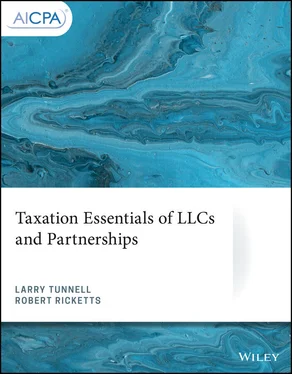In a limited partnership, the power to bind the partnership contractually, and to make all management decisions, is vested in the hands of the general partners. Other partners, referred to as limited partners, make capital investments in the partnership but are not allowed to participate in management and cannot enter into binding contracts on behalf of the partnership. Reflecting their restricted ability to influence partnership affairs, these partners are shielded from responsibility for partnership obligations. Full liability for partnership debts rests with the general partners, who control the partnership's actions. Therefore, limited partners are in much the same position as shareholders in a corporation. They invest money in the partnership's business without expressing any voice in how the business is conducted. If the venture is profitable, the partners share in the profits. If it fails, they stand to lose their entire investment. However, their losses are limited to the amounts directly invested in the firm. Unlike a general partner, partnership liabilities do not follow the limited partners individually, and therefore their exposure is limited to the amounts actually invested (or legally pledged) to the firm.
 Example 1-2
Example 1-2
Last year, Marge invested $10,000 as a limited partner in an oil and gas drilling partnership. The general partner of the partnership was Ted, a business acquaintance of Marge's. Early this year, a mishap on the drilling site caused a fire, which eventually spread to thousands of acres, causing significant losses of livestock and some farm and ranch buildings in the area. The damages resulted in lawsuits against the partnership. Unfortunately, the well being drilled by the partnership turned out to be dry, and the partnership did not have sufficient assets to satisfy the damage assessment resulting from the lawsuit. Although Marge will lose her entire $10,000 investment in the partnership, as a limited partner she has no personal responsibility for the damages awarded against the partnership. In contrast, Ted, the general partner, is personally responsible for the outstanding debts of the partnership. Therefore, in addition to any capital he invested directly in the partnership, Ted will be liable to the farmers and ranchers whose livestock and buildings were lost in the fire started at the drill site.
1 Midge is a 10% limited partner in Wild Catter, an oil and gas drilling partnership. She received her partnership interest in exchange for a $10,000 investment in the partnership. The balance in her capital account as of the beginning of the current year was $10,000. She has made no additional contributions to the partnership and received no distributions. In January, a pipe burst on one of the partnership's properties and several thousand gallons of crude oil leaked onto surrounding pastureland. The resulting damage rendered the land unusable and rendered all the partnership's assets worthless. The landowner sued the partnership, demanding actual and punitive damages of $2,500,000. Under the terms of the partnership agreement, Midge receives 5% of partnership losses and 10% of partnership profits. She is not obligated to restore deficits in her capital account. What does Midge stand to lose if the suit is successful?$2,500,000.$250,000.$10,000.$0.
2 In the preceding question, assume that Midge was the only general partner of the partnership, and that the partnership allocated 50% of partnership losses to her, but only 10% of partnership profits. In addition to her initial investment of $10,000, how much would she stand to lose if the lawsuit against the partnership is successful?$2,500,000.$1,250,000.$10,000.$0.
As noted, a limited partnership offers liability protection to limited partners, whereas general partners remain fully liable for unsatisfied claims of the partnership's creditors. Two other forms of partnerships are available which provide some protection for general partners as well. The first, called a limited liability partnership (LLP), did not exist until after the failure of Leventhal & Horwath discussed in example 1-1. Following the bankruptcy of the nation's eighth largest accounting firm in 1990, states began to yield to the pressure of professional services organizations (principally accounting and law firms) and passed laws allowing for LLPs. In an LLP, the partnership itself remains liable for all the actions taken by its partners and employees. However, individual partners in the partnership are shielded from personal liability for losses caused by the actions of partners other than themselves. 1 That is, each partner is personally responsible for losses or other liabilities stemming from his or her own actions but is shielded from personal risk for the actions of his or her partners. Therefore, in an LLP, every partner enjoys at least some of the protections provided to limited partners in a limited partnership. The partners do not have to give up their voice in management, nor their rights to bind the partnership contractually, however, in order to obtain this protection. The LLP therefore moves a substantial step closer to a corporation in terms of the benefits and protections it provides to its members.
 Example 1-3
Example 1-3
Carl is a partner in a multi-state accounting firm organized as a limited liability partnership. Two years ago, one of his partners in Florida took a bribe in exchange for rendering a clean audit report on one of the firm's newer clients. Last year, the client filed for bankruptcy protection, and its stockholders sued Carl's accounting firm. After it was discovered that a partner in the firm had taken bribe money to issue a clean report, the stockholders won a significant settlement from the firm. The settlement was so large, in fact, that it caused Carl's firm to become bankrupt. Carl will lose his entire investment in the firm but will not suffer any additional liability for the settlement obligation because he had no involvement in issuing the fraudulent audit report. In contrast, the partner who issued the fraudulent report will not only lose his or her investment in the firm but will also remain personally liable for the portion of the settlement obligation remaining unsatisfied after bankruptcy of the accounting firm.
A relatively new type of limited partnership, the limited liability limited partnership (LLLP), is available in some states. 2 Unlike the LLP, which is a general partnership that registers in the LLP form, an LLLP is a limited partnership in structure that registers with the state in LLLP form. Therefore, the primary difference between an LLLP and the more familiar LLP is the extent to which the partners participate in management. An LLLP is essentially a limited partnership in which all partners, including the general partner(s), have limited liability. Therefore, unlike an LLP, not all partners in an LLLP can participate in management. All do, however, have limited liability for losses incurred as a result of the actions of other partners.
A final type of entity which can be treated for tax purposes as a partnership is the limited liability company (LLC). An LLC, like an LLP or LLLP, extends liability protection to all partners without requiring that they forfeit their ability to participate in management or act as the firm's representative in dealings with parties outside the partnership. Moreover, LLCs, like general partnerships, can elect to be taxed as either partnerships or corporations (including S corporations). In all states and the District of Columbia, an LLC can exist with only one owner. In contrast, LLPs and LLLPs, like all other partnerships, are required to have two or more partners. 3
Читать дальше

 Example 1-2
Example 1-2










